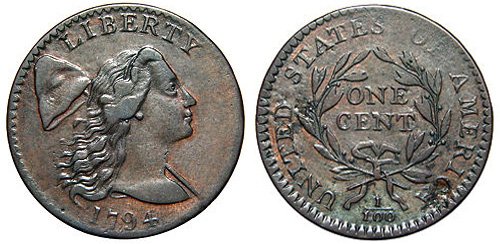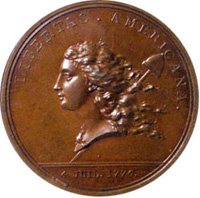Guide to U.S. Liberty Cap Large Cents
The Liberty Cap Large Cent represented the third design introduced for the cent denomination during its first year of production in 1793. As the result of criticism from various sources, the design only lasted until 1796, however this was still considerably longer than duration of just a few months seen for the earlier designs. The new design experienced a low mintage for the first year of production, but other years saw reasonable numbers produced. Some specific varieties of the series are true rarities, with two of the most desirable large cent varieties found within this type.

Although the cent may seem unimportant within modern commerce, it held a very important role for the people of late 18th century America. Most business was conducted in half cents and cents, and coins of higher value were rarely used for day-to-day transactions. Accordingly, the cent and to a lesser extent the half cent, were the most heavily produced denominations at the early United States Mint.
The Liberty Cap Cent was designed by Joseph Wright, a New Jersey portraitist born in 1756 who had received his art education in England. He was perhaps best known for his portraits of George Washington. Ultimately, Wright would not live to see the first cents bearing his design released into circulation, as he died from the yellow fever epidemic in the late summer of 1793.

Wright’s obverse design was largely based on the important 1783 Libertas Americana Medal, issued by the Paris Mint. For the cent, the head of Liberty is featured, facing to the right. Her hair is free and flowing, similar to the earlier Chain and Wreath Cents, but now closer to her neck. The inscription “LIBERTY” is placed above the head, and the date is seen below. Over her left shoulder, Liberty carries a pole with a cap placed on top. The Phrygian Cap or Liberty Cap was a symbol of freedom which had become popular during the American Revolution.
The reverse was based on the previous wreath design by Henry Voigt with some slight alterations. A simple wreath is seen at the center, and the denomination “ONE CENT” is placed within. The denomination is also given below the wreath as “1/100,” divided by a horizontal fraction bar. The design is completed by the inscription “UNITED STATES OF AMERICA,” which is nearly fully around the rim.
Despite the fact that this type was only struck with four different dates, there are over 100 known varieties. The large number is due to the fact that each die was made by hand, resulting in differences in placement of the lettering and date, as well as the general execution of the portrait. These different portraits are usually identified as Head of 1793, 1794, or 1795. Many specialists have devoted complete collections to the series and even attempted a full set of Liberty Cap Large Cent die varieties.

